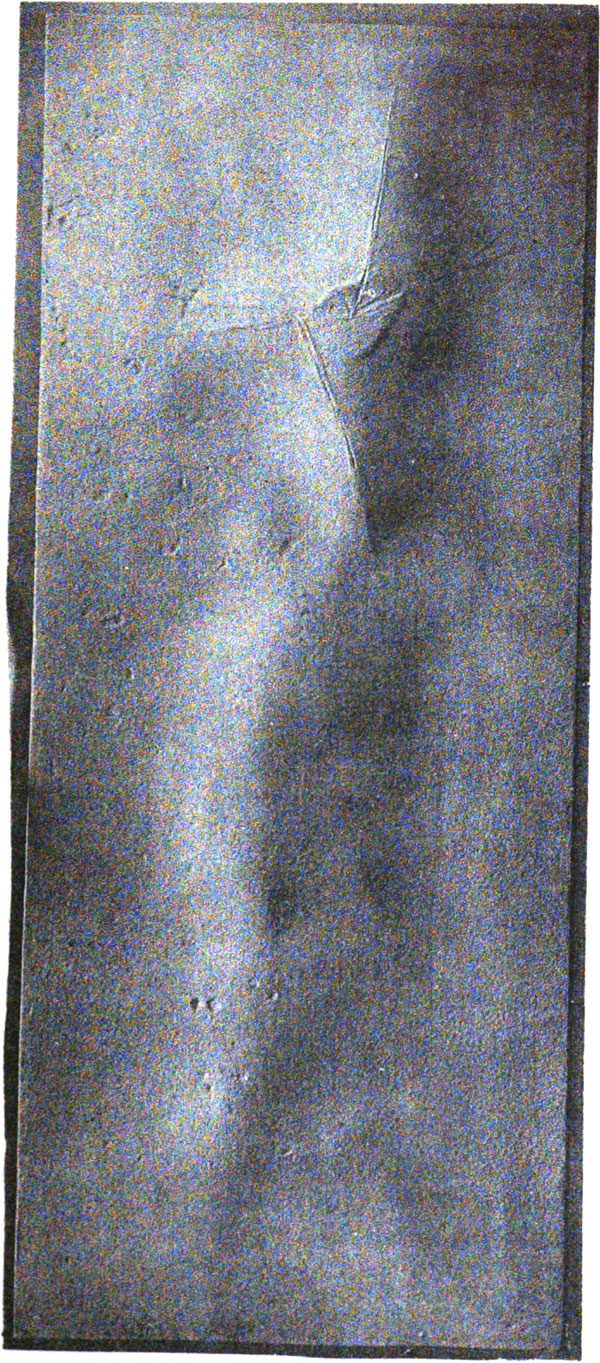on sheets of lead, 2

*
Plate IV, Effects of superficial expansion on sheets of lead.
Experiment No. 3.—I next nailed a sheet of 7 lb. lead to a deal board. It measured 1 foot 7 inches by 8 1/2 inches between the fastenings. ¶ On the flame of a blowpipe being brought to play upon it as before, it arched up in a more regular way than in the first experiment, and after repeated operations it settled into three protuberances, having an irregular linear arrangement. The lead in this example was not pressed down at all, but allowed free play to assume whatever form it liked. I then cut star-like gashes into one of the protuberances, about half through the lead, with the effect after re-heating of ridging up this part at an angle. The experiment was made in 1882. I have kept the lead on the board in my bedroom window ever since, exposed to the ordinary variations of temperature. The ridges are higher in summer and lower in winter, but have become permanently further raised about 1/10 of an inch. As the wood itself is subject to expansion from moisture and shrinkage from drying, it is impossible for me to say how much is due to the movement of the wood, and how much to the varying expansion of the lead. The modelling of the surface is varied and very instructive. (Plate IV. p. 28).
*
Ink-photos from plaster casts of the sheets of lead experimented upon...
illustrating Chapter IV. Mechanical effects of expansion by heat as determined by experiment on various materials.
ex Thomas Mellard Reade (1832-1909, *). The Origin of Mountain Ranges considered experimentally, structurally, dynamically, and in relation to their geological history. London, 1886
—
here by accident.
something about the theoretical contraptions and byways required to create images of this sort, and the narratives that frame them.
tags: lead; down-spout orogeny; T. M. Reade, The Origin of Mountain Ranges (1886)